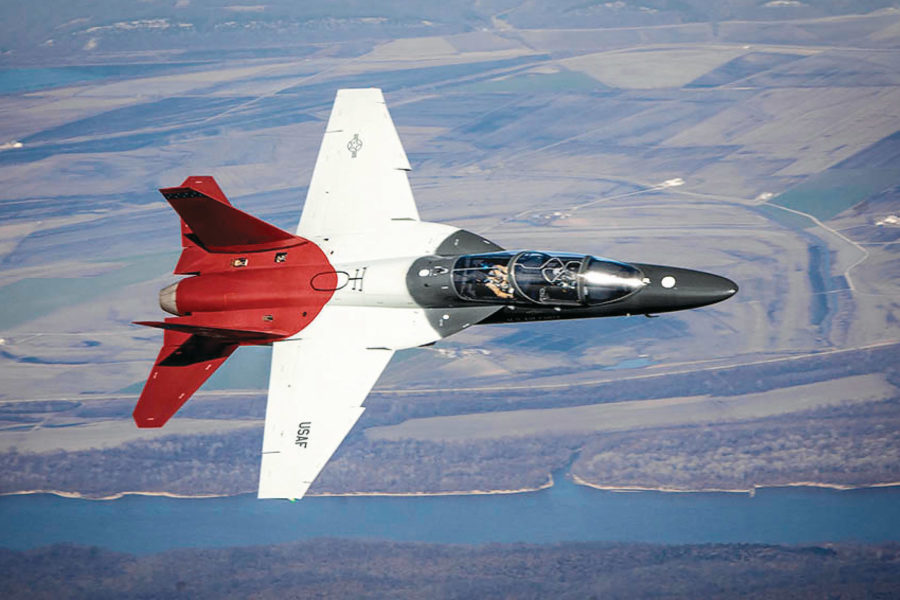The first T-7A static test article is taking shape at Boeing’s St. Louis, Mo. facilities, and should be fully assembled in the next few months, company officials reported Feb. 23. The first all-up T-7A will be rolled out early in 2022, they said.
The non-flying aircraft, which will lack internal equipment, will be fully assembled when its empennage—two vertical tails, rear fuselage, and horizontal stabilizers—arrives from Boeing’s T-7A partner Saab, which is building the structure in Linkoping, Sweden. The shipset should arrive in about a month, senior operations and quality manager Tom Bresnahan told reporters in an online press conference to coincide with AFA’s virtual Aerospace Warfare Symposium.
The forward fuselage is 90 percent complete and is being put together by just three workers, Bresnahan said. Maintainers and technicians are helping develop “the most efficient way to put it together.” The aircraft has come together so far with no re-drilling of holes and “minimal or no shimming,” verifying the digital design methods used on the T-7A, he said. The static article will be tested to ensure a service life of 8,000 hours on the T-7A.
Charles Dabundo, T-7 vice president and program manager, said the first airworthy, production T-7 will be delivered in 2023, and the first squadron will be operational in 2024. Boeing is eyeing an initial production rate of one per month “building up to about five per month,” Dabundo said. The Air Force plans to buy at least 246 T-7As.
The two eT-7As, the pre-production aircraft used to verify Boeing’s performance proposals to the Air Force, have been flying to explore some parts of the flight envelope and will continue to do so through the rest of this year, Dabundo said. Beyond that, “we will keep them active,” he said. Flight testing of initial production aircraft will be done at both St. Louis and Edwards AFB, Calif.
Dabundo said Boeing has had some preliminary discussions with the Navy about the T-7 potentially answering its need for a T-45 replacement, but “that’s not a program of record, yet,” he said. “We hope to play a role” in that project, he added. There has also been some interest in a light combat version of the T-7, or for use as an Aggressor aircraft, but such discussions are also very preliminary, Dabundo said. He declined to discuss what kind of combat payload such an aircraft would be able to carry.
